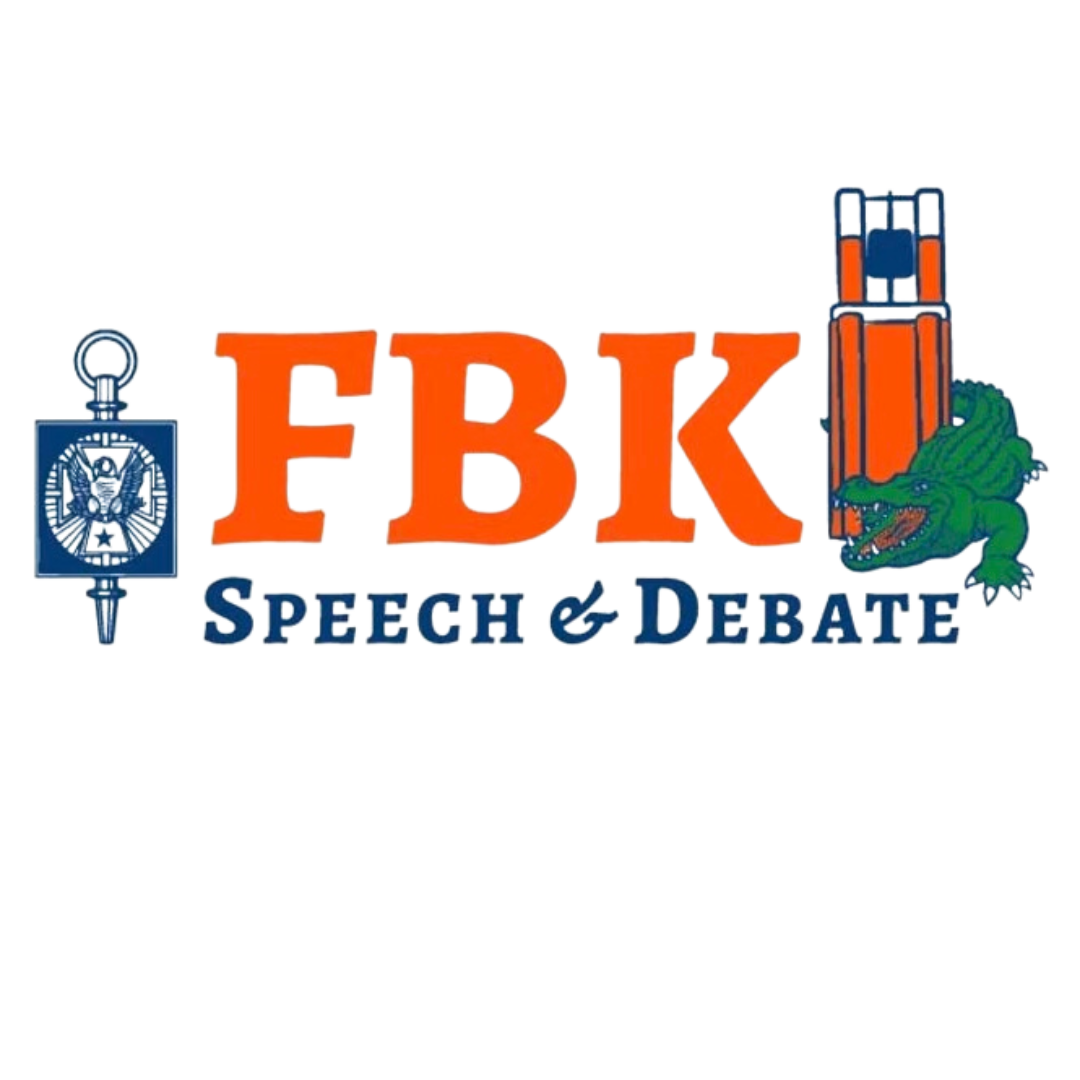EVENTS
EVENTS
Main Events
Public Forum
Public Forum Debate (PF) involves opposing teams of two, debating a topic concerning a current event. Proceeding a coin toss, the winners choose which side to debate (PRO or CON) or which speaker position they prefer (1st or 2nd), and the other team receives the remaining option. Students present cases, engage in rebuttal and refutation, and also participate in a “crossfire” (similar to a cross-examination) with the opportunity to question the opposing team. Often, community members are recruited to judge this event.
Lincoln Douglas
In this one-on-one format, students debate a topic provided by the Association. Lincoln-Douglas Debate (LD) topics range from individual freedom versus the collective good to economic development versus environmental protection. Students may consult evidence gathered prior to the debate but may not use the internet in round. An entire debate is roughly 45 minutes and consists of constructive speeches, rebuttals, and cross-examination
Student Congress
A simulation of the U.S. legislative process in the Senate and the House, students generate a series of bills and resolutions for debate in Congressional Debate. Debaters (also referred to as Senators and Representatives) alternate delivering speeches for and against the topic in a group setting. An elected student serves as a presiding officer to ensure debate flows smoothly. Students are assessed on their research, argumentation, and delivery skills, as well as their knowledge and use of parliamentary procedure.
Individual Events
Program Oral Interpretation
Using a combination of prose, poetry, and drama, students construct a program up to 10 minutes in length using at least two out of the three genres: prose, poetry, and drama (plays). With a spotlight on argumentation and performative range, Program Oral Interpretation (POI) focuses on a student’s ability to combine multiple genres of literature centered around a single theme. Competitors are expected to portray multiple characters. No props or costumes may be used except for the manuscript. Performances also include an introduction written by the student to contextualize the performance and state the titles and authors used in the program.
Dramatic Interpretation
Using a play, short story, or other published work, students perform a selection of one or more portions of a piece up to ten minutes in length. With a spotlight on character development and depth, Dramatic Interpretation (DI) focuses on a student’s ability to convey emotion through the use of a dramatic text. Competitors may portray one or multiple characters. No props or costumes may be used. Performances may also include an introduction written by the student to contextualize the performance and state the title and author.
Duo Interpretation
Two competitors team up to deliver a ten-minute performance of a published play or story. Using offstage focus, Duo Interpretation (DUO) competitors convey emotion and environment through a variety of performance techniques focusing on the relationships and interactions between the characters. No props or costumes are used. Performances may also include an introduction written by the students to contextualize the performance and state the title and author.
Humorous Interpretation
Using a play, short story, or other published work, students perform a selection of one or more portions of a piece up to ten minutes in length. Humorous Interpretation (HI) is designed to test a student’s comedic skills through script analysis, delivery, timing, and character development. Competitors may portray one or multiple characters. No props or costumes may be used. Performances can also include an introduction written by the student to contextualize the performance and state the title and author.
Original Oratory
Students deliver a self-written, ten-minute speech on a topic of their choosing. Limited in their ability to quote words directly, Original Oratory (OO) competitors craft an argument using evidence, logic, and emotional appeals. Topics range widely, and may be informative or persuasive in nature. The speech is delivered from memory.
Extemporaneous Speaking
Extemporaneous Speaking is a speech on current events with limited preparation time. A student’s understanding of important political, economic, and cultural issues is assessed along with critical thinking and analytical skills. Students report to a draw room, gather at tables, set out their files, and await their turn to draw topics. A staff member in the prep room calls out student codes based upon a pre-assigned speaker order. When a student’s code is called, the student will approach the draw table and select one of three available prompts. The student will then prepare for thirty minutes to deliver a speech answering the chosen topic. When prep time is up, the student reports to the competition room to deliver a seven minute speech.
Informative Speaking
Students deliver a self-written, ten-minute speech on a topic of their choosing. Limited in their ability to quote words directly, Informative Speaking competitors craft a speech using evidence, logic, and optional visual aids. All topics must be informative in nature; the goal is to educate, not to advocate. The speech is delivered from memory.
